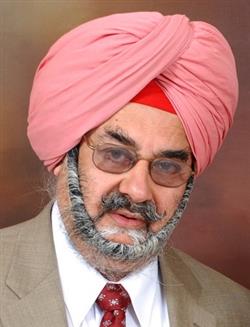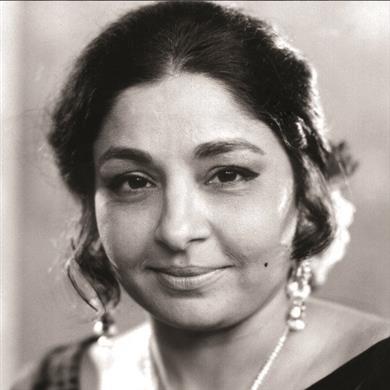By Harjap Singh Aujla
Prior to the birth of Pakistan, two distinct styles of the Indian classical music existed. The Hindustani music was prevalent in Indo-Gangetic India. It had complete dominance from the North West Frontier Province,

Harjap Singh Aujla
Punjab, the Princely State of Kashmir, Delhi, Rajputana, Sind, the United Provinces, Bihar, the Presidency of Bengal, Orissa, the Central Provinces, Central India, the Presidency of Bombay to some princely states immediately to the South of Northern India. Karnataka Music was dominant in the Presidency of Madras, the princely states of Travancore, Cochin, Mysore, Hyderabad and some smaller Southern Indian principalities. Pakistan inherited Hindustani Classical Music from India. Hardly any Karnataka musician crossed over to Pakistan.
The British introduced Western musical instruments into the Indian orchestra. The British did not fiddle with both musical schools prevalent in Sub Continental India. However music of iconic Karnataka stars like M.S. Subhalakshmi was broadcast in the Northern provinces too. Similarly the music of some great Hindustani artists like Hira Bai Barodekar and Kamla Jharia was not alien to the Southern provinces. After India’s independence, the instrumental music from the South and North was popularized in both regions by using it as signature tunes, which turned out to be a popular change.
The different provinces of Pakistan inherited a common link with Northen India in the form of Hindustani Classical Music. For the first few years, the artists in Pakistan did not fiddle even with the nomenclature of musical Raagas, but lately some name changes were made, for example Raaga Chandrakauns was renamed Raaga Chandkauns to give it a Persian pigment.

Farida Khanum
While in Kapurthala in my childhood, I could conveniently hop between Radio Pakistan Lahore and All India Radio Jullundur. The music at both stations was identical. K.L. Saigal was the dominant male semi-classical singer and later on born in Amritsar Mohammad Rafi dominated as a male playback singer. Suraiya in India and Noorjehan in Pakistan both Lahori girls, with identical styles, were the dominant female singers. Then Lata Mangeshkar in India and Zubaida Khanum of Amritsar in Pakistan popped up on the scene as leading film playback singers. Among semi-classical singers Begum Akhtar of Fyzabad ruled as the Queen of Ghazals in India and Mullika Pukhraj of Jammu dominated in Pakistan. After Begum Akhtar’s demise, another Amritsar born Farida Khanum became the leading female Ghazal singer in Pakistan. Talat Mahmood of Lucknow became the leading male light Ghazal singer in India and Mehdi Hassan rose to prominence as a light classical exponent of Ghazals in Pakistan.
In India, the typical semi-classical music included Thumri, Dadra and Tappa. Ghazal renditions joined the club later on. Jagjit Singh a brilliant exponent of Ghazals along with wife Chitra Singh combined the refinement and romanticism of Talat Mahmood’s voice and the mastery over classical music of Mehdi Hassan to successfully create his unique amalgam for rendition of Ghazals. On my frequent visits to Amritsar, I carry one of my best radios for an opportunity of flip flop between Radio Pakistan Lahore and All India Radio Amritsar (Urdu Service). To my amazement Ghazal singing is on the increase in Pakistan, but Thumri and Dadra have become a rarity at Radio Pakistan. But at All India Radio both Thumri and Dadra are thriving as ever and that is one sign of a minor drift in our musical styles.
harjapaujla@gmail.com